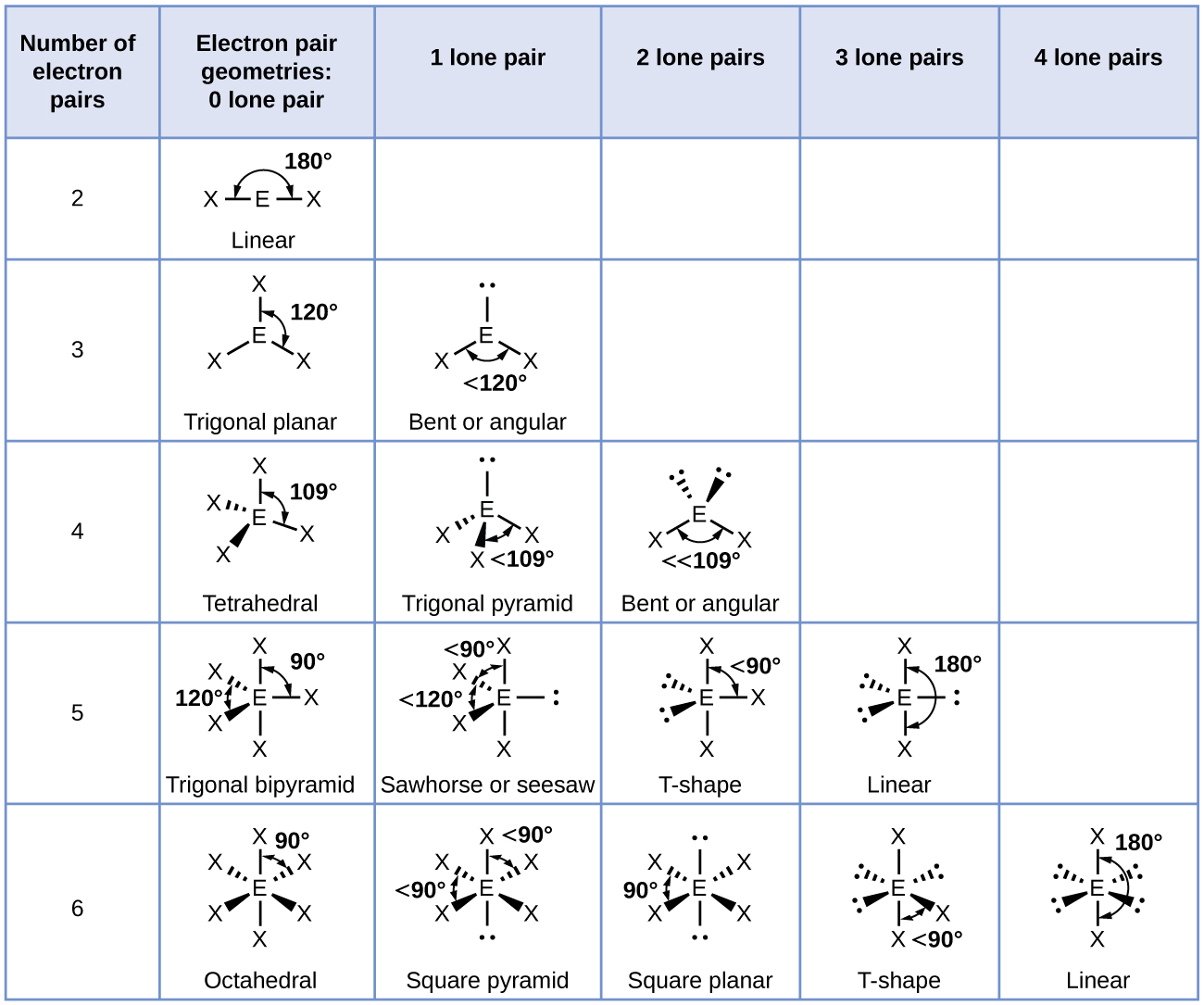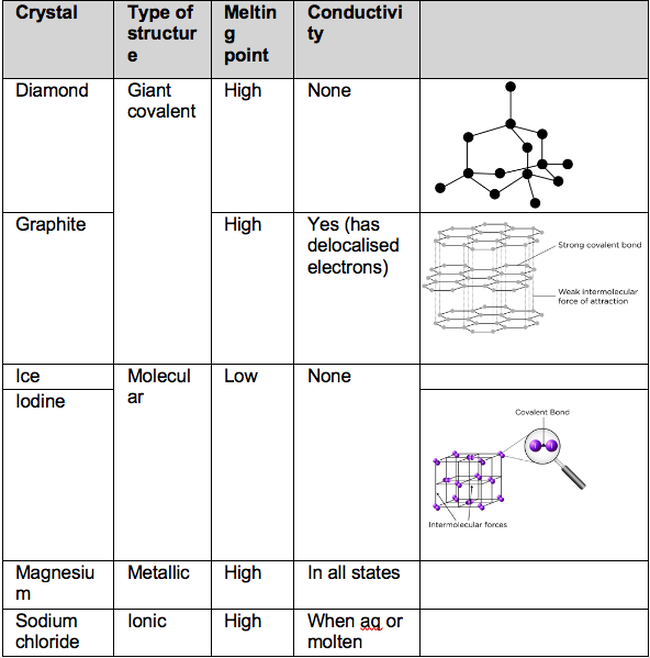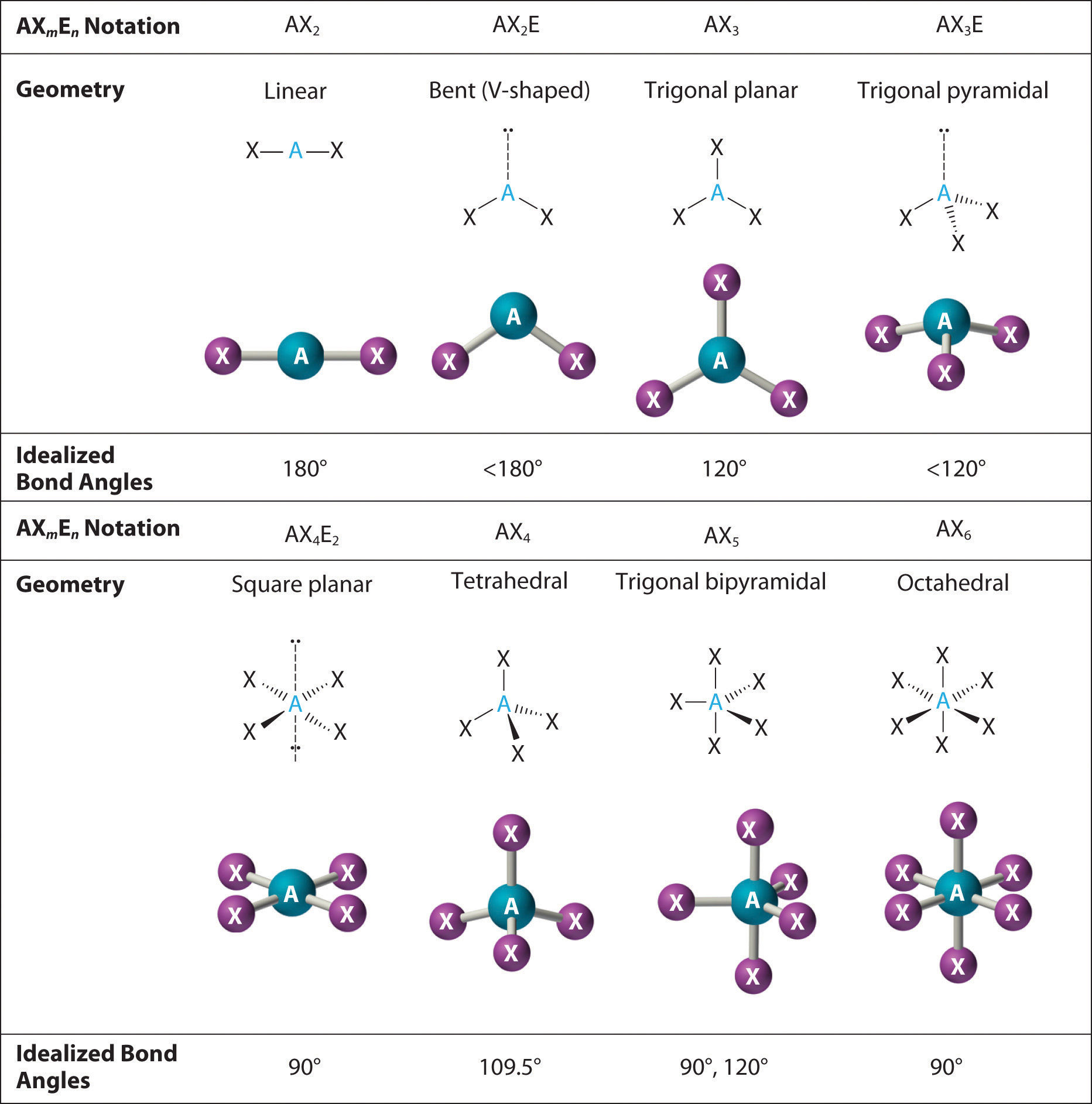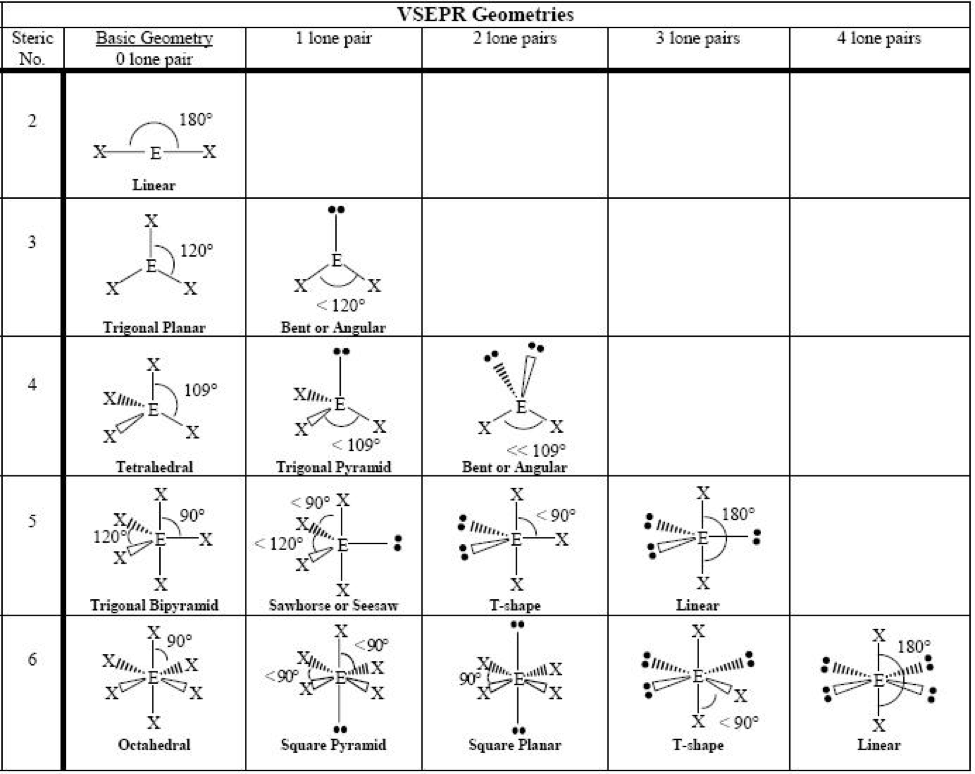
23+ Molecular Geometry Chart With Bond Angles Image GM
Edexcel Chemistry A-level - Shapes and Bond Angles. Q22. Boron and aluminium are in the same group of the Periodic Table. Both form compounds with chlorine and with fluorine. Boron reacts directly with chlorine to produce a covalently bonded compound, BCl 3. (i) Write the equation for this reaction. State symbols are not required.

Molecular Structure and Polarity · Chemistry
The valence shell electron pair repulsion theory (VSEPR) predicts the shape and bond angles of molecules; Electrons are negatively charged and will repel other electrons when close to each other; In a molecule, the bonding pairs of electrons will repel other electrons around the central atom forcing the molecule to adopt a shape in which these repulsive forces are minimised

a sheet of paper with the names and numbers of different substances
In this video, we look at the shapes of molecules where there is no lone pair of electrons on the central atom. We explore electron pair repulsion theory and.

5 Shape of molecules
The bond pairs are at an angle of 120° to each other, and their repulsions can be ignored. Now consider the final structure. Each lone pair is at 90° to 2 bond pairs - the ones above and below the plane. That makes a total of 4 lone pair-bond pair repulsions - compared with 6 of these relatively strong repulsions in the last structure.

Shapes of Simple Molecules & Ions (1.5.1) AQA A Level Chemistry Revision Notes 2017 Save My
We explore electron pair repulsion theory and look at how this explains the shapes of molecules including molecules with multiple bonds, such as double bonds. We then look at the shapes and bond angles in linear, trigonal planar, tetrahedral, trigonal bipyramidal and octahedral molecules. In the next video, we look at the shapes of molecules.

Alevel Chemistry AQA Notes Atomic Structure ALEVEL NOTES
Tetrahedral. 4 BP and 0 LP. 109.5°. Pyramidal. 3 BP and 1 LP. 107°. Non-linear. 2 BP and 2 LP. 104.5°. Octahedral. 6 BP and 0 LP. 90°. Study with Quizlet and memorize flashcards containing terms like Linear, Trigonal Planar, Tetrahedral and more.

molecular shape and angles Teaching chemistry, Chemistry education, Chemistry lessons
Common bond angles: 2 Electron Pairs on a single atom form 180° bond angles. 3 Electron Pairs on a single atom form 120° bond angles. 4 Electron Pairs on a single atom form 109.47 (1220… = ) ° bond angles. 6 Electron Pairs on a single atom form 90° bond angles. 2 Lone Pairs and 2 Bonding Pairs on a single atom form a 104.5° bond angle.

Square Pyramidal Bond Angle slideshare
When determining the shape and bond angles of a molecule, the following VSEPR rules should be considered: Valence shell electrons are those electrons that are found in the outer shell;. Philippa has worked as a GCSE and A level chemistry teacher and tutor for over thirteen years. She studied chemistry and sport science at Loughborough.

What is the bond angle of OF2?
3.1.3.1 Ionic Bonding. Ionic bonding occurs between a metal and a non-metal. Electrons are transferred from the metal to the non-metal to achieve full outer shells. When the electrons are transferred, it creates charged particles called ions. Oppositely charged ions attract through electrostatic forces to form a giant ionic lattice.

Bond Angle For Bent Molecular Geometry
This gives a trigonal pyramid arrangement with a bond angle of 107° NH 4 + Nitrogen is in group 15, so has 5 valence electrons; H is in group 1, so has 1 valence electron;. Philippa has worked as a GCSE and A level chemistry teacher and tutor for over thirteen years. She studied chemistry and sport science at Loughborough University.

Bonding Shapes and Angles Teaching Resources
A-Level Chemistry - Bond Angles. 9 terms. Harv234. Bond angles Chemistry A level. 7 terms. Andrew_Forsyth4. A Level Chemistry Bond Shapes. 14 terms. charlotte_2315. Sets found in the same folder. AQA A-Level Chemistry - Atomic Structure. 38 terms. molly_joy_froggatt. AQA A-Level Chemistry - Bonding. 49 terms.

Shapes of Molecules and Ions ALevel Chemistry Revision Notes
Because the lone pair of electrons occupies more space than the bonding pairs, we expect a decrease in the Cl-Sn-Cl bond angle due to increased LP-BP repulsions. D With two nuclei around the central atom and one lone pair of electrons, the molecular geometry of SnCl 2 is bent, like SO 2, but with a Cl-Sn-Cl bond angle of 95°. The.

chemical bonding Brilliant Math & Science Wiki
Shapes of Molecules. The valence shell electron pair repulsion theory (VSEPR) predicts the shape and bond angles of molecules. Electrons are negatively charged and will repel other electrons when close to each other. In a molecule, the bonding pair of electrons will repel other electrons around the central atom forcing the molecule to adopt a.

A Level Chemistry Bond Angles And Shapes Chemical Formulas
The way this works is best shown by examples. Check your A-level specification to find out which shapes you have to KNOW and which ones you need to be able to WORK OUT. Start with two electron pairs, both bonding (eg BeCl 2). The electrons spread to opposite sides of the imaginary sphere and so the molecule is LINEAR with a bond angle of 180 o.

XeCl4 Lewis Structure, Geometry, Hybridization, and Polarity Techiescientist
Formation of a permanent dipole - (polar covalent) bond A polar covalent bond forms when the elements in the bond have different electronegativities . (Of around 0.3 to 1.7) When a bond is a polar covalent bond it has an unequal distribution of electrons in the bond and produces a charge separation, (dipole) δ+ δ-ends. The element with the.
Shapes of molecules a2levellevelrevision, chemistry, bondingandstructure, shapes
electron pairs (bonding pairs and lone pairs) arrange themselves to produce the minimum amount of repulsion. Click the card to flip 👆. 1 / 40. 1 / 40. Flashcards. Learn. Test. Match. Q-Chat.